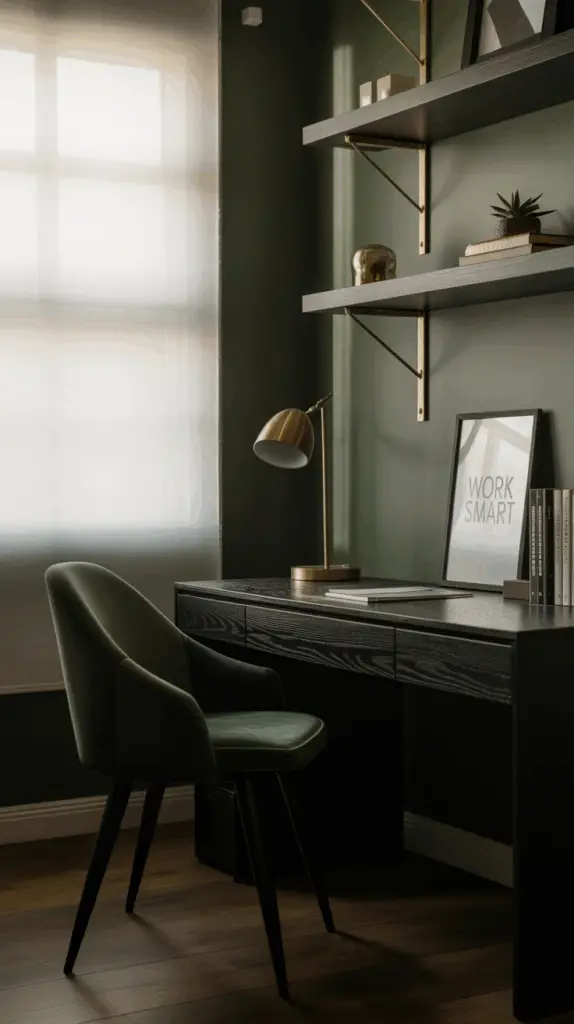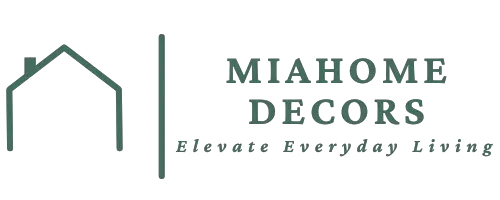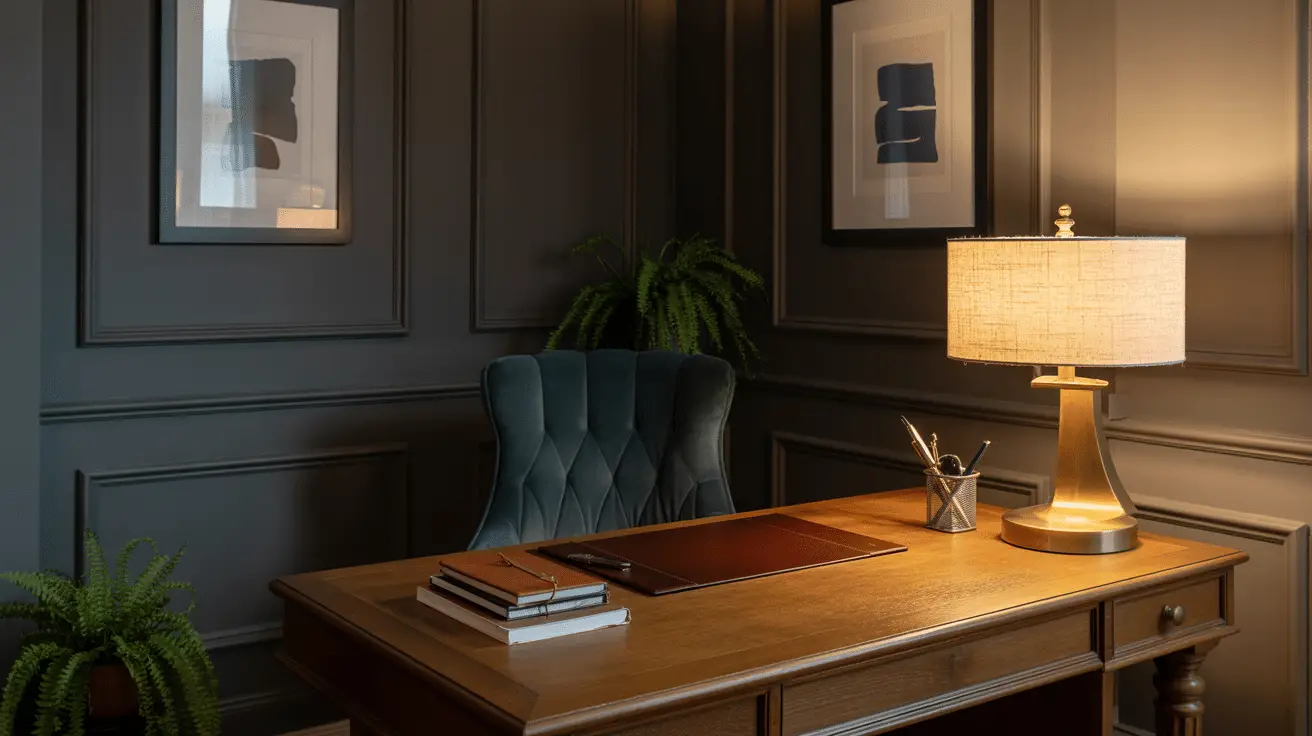Transform Your Workday with Small Moody Office Design for Productivity and Style
Table of Contents
Introduction
Remote work has redefined how we approach our living spaces, with home offices becoming an essential part of modern life. Yet studies show that nearly 70% of people working from home feel their workspace negatively affects productivity and mood. Often, the culprit is uninspired design—bright, generic rooms that fail to inspire focus or comfort. If your current office feels flat, cluttered, or distracting, there’s an emerging design trend worth exploring: the small moody office.
Moody design embraces rich, dark tones, layered textures, and curated lighting to create spaces that feel grounded, cocoon-like, and deeply atmospheric. Far from making a room feel oppressive, the right moody palette transforms compact offices into inspiring sanctuaries. These spaces encourage concentration, reduce overstimulation, and project a refined aesthetic that makes workdays more enjoyable.
In this article, we’ll explore how to transform your workday with small moody office design. From choosing the right colors and textures to arranging furniture and adding statement pieces, you’ll find practical strategies for making even the tiniest workspace feel elevated. We’ll also look at lighting techniques, storage solutions, and finishing touches that ensure your office blends functionality with style. Whether you’re designing a new home office or refreshing an existing nook, these ideas will help you create a workspace that feels as inspiring as it is efficient.
Why Moody Design Works for Small Offices
The term “moody design” often conjures images of dark paint, dramatic lighting, and luxe finishes. But its success lies in how it shapes the atmosphere of a room. For small home offices, these qualities can be transformative.
Dark tones create intimacy, enveloping the space in a cocoon-like ambiance that encourages focus. Unlike bright, overstimulating environments, moody offices feel intentional and grounding. The result is a workday that feels less chaotic and more structured.
Small spaces benefit from this approach because moody design often emphasizes minimal clutter and strong focal points. This naturally reduces visual noise and maximizes the impact of carefully chosen details. When layered with textures—like matte paint, wood, or velvet accents—the environment feels both professional and cozy.
| Benefit of Moody Design | Why It Works |
| Enhances focus | Darker tones reduce overstimulation |
| Creates intimacy | Cocoon-like atmosphere in small spaces |
| Adds luxury | Deep colors paired with luxe finishes |
| Simplifies clutter | Minimal, curated styling |
Choosing the Perfect Color Palette
Color is the foundation of moody office design. The right palette sets the tone for focus, creativity, and comfort. In smaller offices, dark doesn’t mean oppressive—it means carefully curated shades that invite depth without overwhelming the room.
Rich neutrals such as charcoal, slate, and espresso are versatile bases. These shades establish a professional mood while providing a timeless backdrop. Deep jewel tones like emerald green, navy blue, or burgundy add drama and sophistication, working especially well in accent walls or cabinetry.
Contrast is crucial. Pair dark tones with lighter elements—cream rugs, pale wooden furniture, or metallic accents—to avoid flatness. The interplay between light and dark creates visual interest and ensures the space remains dynamic.
| Color Option | Mood Effect | Best Use |
| Charcoal/Slate | Professional, grounding | Walls or cabinetry |
| Emerald Green | Energizing, rich | Accent wall or upholstery |
| Navy Blue | Calm, intellectual | Built-in shelves or trim |
| Burgundy | Dramatic, creative | Statement wall or chair |

Furniture Selection for Function and Style
In a small moody office, furniture must strike a balance between function and aesthetics. Because space is limited, each piece should feel intentional, multipurpose, and cohesive with the overall palette.
Start with the desk—it’s the anchor of the office. A compact wooden desk in a dark finish pairs seamlessly with moody walls, while a glass-top desk provides contrast and prevents visual heaviness. Consider floating or wall-mounted desks for extremely tight spaces.
Seating should be comfortable but stylish. A velvet or leather chair in a jewel tone becomes both functional and decorative. Slim profiles work best in smaller offices, avoiding bulky silhouettes that overwhelm the room.
Storage solutions like wall-mounted shelves or cabinets in matching tones maintain cohesion and prevent clutter. Integrating metallic finishes, such as brass handles or matte black hardware, adds subtle elegance.
| Furniture Piece | Function | Design Tip |
| Desk | Work anchor | Dark wood or glass for contrast |
| Chair | Comfort + style | Velvet or leather in jewel tones |
| Shelving | Storage | Wall-mounted to save space |
| Hardware | Detail | Brass or matte black finishes |
Lighting That Enhances the Atmosphere
Lighting plays a starring role in moody office design. Without careful planning, dark tones can feel flat. With layered lighting, however, the result is a workspace that feels atmospheric and deeply inviting.
Ambient lighting should be soft and diffuse, avoiding harsh overhead glare. A warm-hued flush-mount fixture or a concealed LED strip provides an even glow. Task lighting is critical for productivity—desk lamps with adjustable arms or sconces positioned near work areas ensure functionality.
Accent lighting introduces depth and sophistication. A statement pendant, backlit shelving, or under-desk LED strips creates dimension. For added elegance, choose fixtures in brass, black, or matte finishes that align with the moody palette.
| Lighting Type | Purpose | Example |
| Ambient | General glow | Warm flush-mount ceiling light |
| Task | Focused work | Adjustable brass desk lamp |
| Accent | Adds drama | LED strips on shelves |
| Decorative | Visual interest | Pendant over reading chair |
Maximizing Storage in Small Offices
Clutter is the enemy of both productivity and moody design. In small offices, storage solutions should be discreet, stylish, and seamlessly integrated into the design.
Floating shelves are a practical way to add vertical storage while maintaining openness. Painted in the same shade as the walls, they blend in for a seamless look. Built-in cabinets or drawers beneath desks also provide hidden storage for supplies without taking up extra room.
Decorative storage options add character. Leather bins, woven baskets, or fabric boxes in complementary colors double as accents while keeping items organized. Opt for uniform finishes to prevent visual chaos.
| Storage Solution | Space-Saving Advantage | Design Tip |
| Floating shelves | Vertical storage | Paint same as wall color |
| Built-in cabinets | Hidden storage | Custom fit for small nooks |
| Decorative bins | Functional + stylish | Leather or woven textures |
| Drawer organizers | Maximize use | Keeps essentials tidy |
Adding Personality Through Finishes and Accessories
The finishing touches define whether a moody office feels inspiring or oppressive. Accessories and finishes personalize the space, transforming it from functional to atmospheric.
Artwork is a powerful tool. Abstract prints in gold, muted neutrals, or moody tones complement dark walls without overwhelming them. Mirrors also work beautifully, bouncing light while visually expanding the room.
Textiles like rugs, curtains, or throws soften hard surfaces. A plush rug under the desk adds comfort, while heavy drapery in deep tones enhances the cocoon effect. Small details—such as brass pen holders, ceramic planters, or textured notebooks—elevate everyday functionality into design statements.
| Accessory | Role | Example |
| Artwork | Adds personality | Abstract print in muted tones |
| Rug | Comfort + softness | Plush dark-toned rug |
| Curtains | Enhances mood | Heavy drapery in jewel tones |
| Desk accents | Subtle detail | Brass or ceramic organizers |
Creating a Multi-Sensory Work Environment
Moody design goes beyond visual appeal; it also engages other senses to create a holistic work environment. Incorporating elements that appeal to touch, sound, and scent can make the office feel even more immersive.
Textures play a central role. Mixing smooth wood, soft textiles, and cool metals creates tactile interest. Soundproof curtains or plush rugs absorb noise, fostering a quieter environment that enhances concentration.
Scent is another layer of atmosphere. Candles, diffusers, or essential oils in earthy or woody fragrances like sandalwood or cedar pair beautifully with the moody aesthetic. Together, these sensory elements make the space feel grounded, personal, and inspiring.
| Sensory Element | Benefit | Example |
| Texture | Tactile richness | Velvet chair, wood desk |
| Sound | Reduces distraction | Noise-absorbing rug |
| Scent | Enhances mood | Cedar or sandalwood diffuser |
Conclusion
Small moody office design is proof that even compact spaces can be both stylish and functional. By embracing darker tones, layered textures, and intentional lighting, you can transform your workday with an environment that feels immersive and inspiring. Careful furniture choices and smart storage solutions ensure the space remains practical, while accessories and sensory details infuse personality and comfort.
Ultimately, the goal is to create a workspace that supports focus and creativity while offering a sense of retreat. When designed with care, a small moody office doesn’t just accommodate your work—it elevates it.

